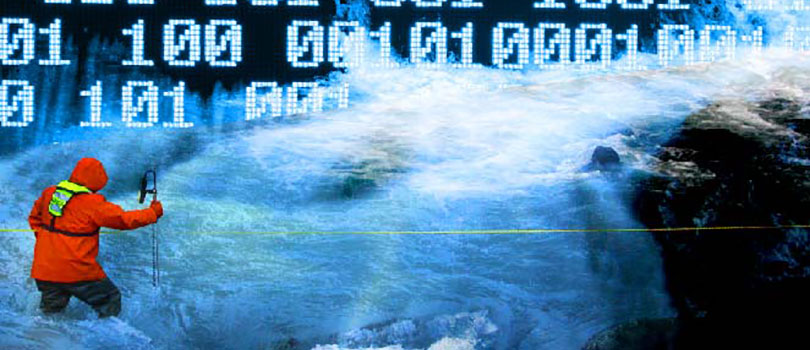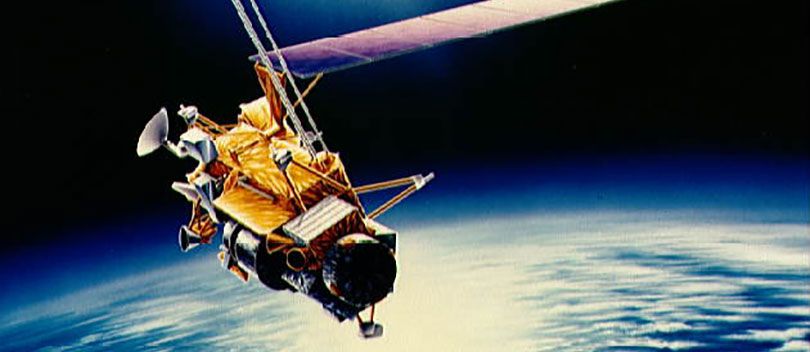
Is Heli-Gauging A Game Changer?
I recently had the very great pleasure of meeting Jeff and Marianne Watson of New Zealand - the power couple of stream hydrography.
I learned a lot from our discussions – the differences in stream gauging techniques and methods between New Zealand and North America can sometimes be traced to differences in geo-physical realities but sometimes the differences are just plain puzzling.
A project that will no doubt keep me in touch with the Watsons for many years will be trying to trace the source of methodological divergence. Why has the mid-section method been adopted in some jurisdictions of the world whether other regions use the mean-section method? Surely, one method is as accurate and as easy to compute as the other. Why would the blending of rating curves be adopted in some regions whereas shift curves used exclusively in other regions? Could there really a reason why one method would somehow be ‘better’ than the other depending on hemisphere?
One thing Jeff showed me was this video of the demonstrating the heli-gauging technique.
The technique was developed by Paul Hannah from the Otago Regional Council in collaboration with the National Institute of Water and Atmospheric Research. Well produced (by Evan Baddock) and fun to watch this is a good example of why we need to be working more closely together as a global hydrometric community.
My first thought on seeing this was thinking back to stream gauging in the Canadian sub-Arctic.
Typically the sites are helicopter access, we would use the helicopter to sling a boat and motor (cached on site) into the water and then again use the helicopter to return the boat to the cache after the stream measurement. How much time, hence money, would be saved by dispensing with the manned boat altogether and gauging from the helicopter?
My next thought was of our ability to nail high water events.
The prospect of reaching several sites in a day, flying over washed out roads and bridges, and be able to quickly and efficiently gauge the highest peaks is pretty compelling.
Is this too good to be true?
At flood stage pitch and yaw from standing waves and moving bed are problematic for the transect method. This problem is easily solved with the discrete panel method but could a helicopter be used to hold a station over moving water for long enough to get a panel discharge? This is difficult enough for a boat operator never mind a pilot who also has several other responsibilities to manage.
We used to do conventional discharge measurements at the Yukon River at Dawson using the transit method for boat positioning. A cross section was laid out with range markers set back from the shore. A survey station was established some distance up stream and angles worked out for each position for which a panel was desired. Once the measurement started the boat operator would take direction from hand signals by the theodolite operator to stay on station. An observer on board the boat would watch the range markers and call for more or less power to keep the boat on the cross section. The hydrographer would meanwhile work as fast as possible to get the sounding and the velocity measurement while the boat pilot maintained position. On many occasions the boat would drift off station and a re-start of the panel measurement would be required. Even in the land of the midnight sun, this made for a very long day. Relations with the boat pilot would need to be repaired with many beers in the bar known as the ‘Snake Pit’ in Dawson City.
One thing about gauging from a helicopter is that you can be much fussier about your choice of measurement section. Perhaps, you just look for a location where a transect measurement will work very well. If there is a tributary between the better location and the gauge site, why not just measure the tributary as well and add or subtract as necessary? The extra measurement will not add much time to your day.
I am impressed by the innovation demonstrated in this video. This solution will never replace the use of tethered boats from bridge decks. However, the boat design and use of the drogue may greatly improve bridge measurements at some locations. For locations where there is no structure to work from and where remote controlled boats are just too small and unsteady this looks like a very good solution. In particular I think this technique will greatly improve the definition of the top end of the rating curve for a great many locations where it is just too difficult or unsafe to get a high flow measurement.


